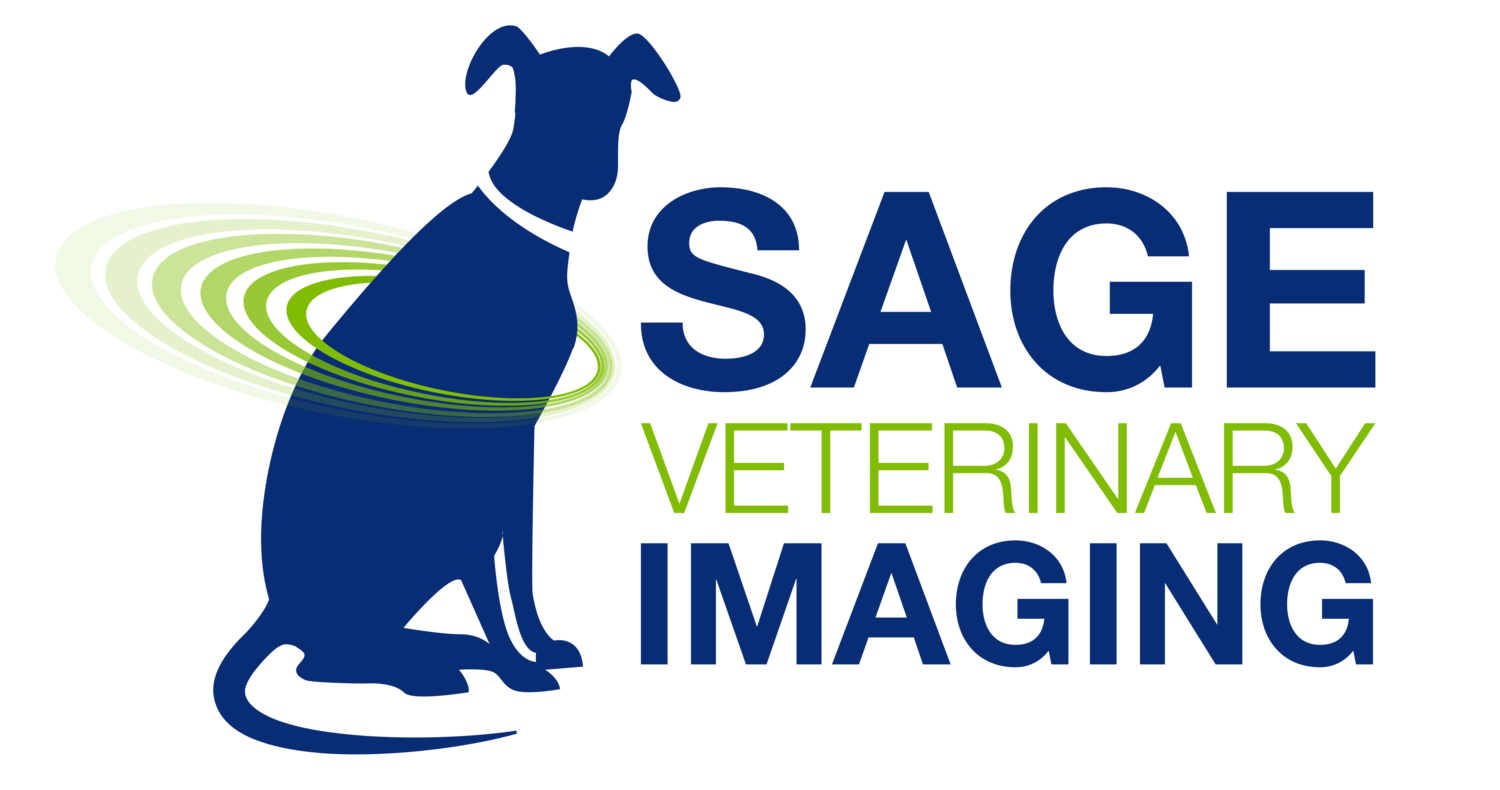High Field vs. Low Field MRI–Which is Right for Your Pet?
Finding the best care for your furry family member starts with understanding advanced diagnostic tools like high-field MRI.
Imagine having a clear picture of what’s happening inside your pet—without invasive procedures or uncertainty. That’s the magic of MRI in veterinary medicine. It provides detailed images that help vets precisely diagnose issues like spinal injuries or neurological disorders.
But did you know that not all MRI systems are created equal? The difference between high-field and low-field MRI lies in their ability to deliver high-quality images that help vets make the right decisions for your pet’s health.
At Sage Veterinary Imaging (SVI), we specialize in veterinary diagnostic imaging, including advanced high-field MRI. Our expertise and technology enable veterinarians to uncover critical insights, ensuring your pets get the care they need.
In this article, you’ll learn:
The differences between high-field and low-field MRI systems.
Why high-field MRI is often essential for small animal diagnostics.
Cost considerations for pet owners and veterinarians.
Let’s explore how choosing the right MRI can make all the difference for your pet’s health.
Understanding the Different Types of MRI Systems
MRI technology is an invaluable tool in veterinary care, allowing vets to uncover what’s happening inside your pet without invasive procedures. But did you know there are different types of systems, each designed for specific needs? Here’s a quick overview:
Low-Field MRI (Fixed Magnet)
Think of these as the budget-friendly option. They’re easier to install and cost under $500,000. But because they use weaker magnets and produce lower-resolution images, the images might not be as sharp.
High-Field MRI (Superconducting)
These are the highest quality available in veterinary diagnostics, offering unmatched clarity. They use stronger magnets and advanced tech.
Portable MRI
Built for flexibility, these are great for large animals like horses, making them ideal for diagnosing lameness or soft tissue injuries directly at stables. However, they don’t match the image quality of high-field systems.
What is Low-Field MRI?
Low-field MRI uses weaker magnets (less than 1 Tesla), making it a practical choice for clinics with tighter budgets. Esaote and Hallmarq systems are leading providers of low-field MRI in veterinary medicine.
These systems are:
Affordable
Have a simple setup
So what’s the catch? The weaker magnetic field means lower image resolution, so subtle issues like tiny brain lesions or complex spinal problems might go unnoticed. This could lead to more tests, additional vet visits, and even potential misdiagnoses—a frustrating experience for both you and your pet.
What is High-Field MRI?
High-field MRI (1 Tesla or more) uses powerful magnets to create incredibly detailed images. It’s like upgrading a blurry picture to HD. Systems from Philips, Siemens, GE, and Toshiba represent the gold standard in high-field MRI technology.
Benefits include:
Clear diagnoses
Better outcomes
Faster, more effective treatments
For example, a high-field MRI can locate a slipped disc in a dog’s spine or spot a small tumor in a cat’s brain–things a low-field MRI might miss. With high-field MRI, your veterinarian can confidently make the best decisions for your pet’s care.
Advanced high-field MRI technology delivers precise diagnostics for pets, ensuring better outcomes and peace of mind for pet owners.
High-Field MRI Applications
MRI plays a vital role in diagnosing a range of conditions across different animals, from 175-pound Komodo dragons to small pets. High-field MRI, in particular, shines in certain challenging cases. Its ability to capture highly detailed images of tiny structures—such as the brain, spine, or joints—ensures accurate diagnoses and effective treatment planning.
Hunting & Sporting Dogs
Dogs like Belgian Malinois, German Shepherds, and Labrador Retrievers are hardworking partners. When these dogs show signs of pain, slowing down, or struggling to move, getting clear answers is critical. High-field MRI provides the clarity to uncover hidden health issues, enabling fast, accurate diagnoses and effective treatment.
Spinal Conditions
Small breeds like Dachshunds are prone to issues such as thoracolumbar intervertebral disc extrusion (or TLIDE). A groundbreaking study revealed that high-field MRI could accurately pinpoint the site and extent of the problem, offering insights that aligned closely with surgical findings. This level of precision can make all the difference in tailoring the right treatment. [1]
Neurological Disorders
In small dogs, such as Chihuahuas and Poodles, brain abnormalities can be challenging to detect. Subtle lesions or malformations might go unnoticed without the high-resolution imaging only high-field systems can provide. With this advanced technology, veterinarians are better equipped to diagnose and plan effective treatments, offering these pets a better quality of life.
Cost Considerations: High Field vs. Low Field MRI
When choosing between high-field and low-field MRI systems, cost is a key factor for clinics and pet owners alike. Here’s how the two compare
High-Field MRI:
Costs $1–$2 million.
Needs specialized facilities like reinforced floors, shielding, and liquid helium cooling.
Higher maintenance costs due to advanced technology.
Provides incredibly detailed images for complex cases.
Low-Field MRI:
Costs under $500,000.
Easier to install with fewer setup requirements.
Lower maintenance costs with lower-grade technology.
Great for routine imaging and smaller clinics.
The choice depends on balancing cost with the level of detail needed for a diagnosis. High-field systems offer exceptional clarity, while low-field systems are budget-friendly for less serious cases.
Why High-Field MRI is Worth It for Pet Owners
High-field MRI may come with a higher price tag, but it provides the accuracy needed to diagnose complex conditions.
For pets with serious or unexplained issues, high-field veterinary MRI:
Enables early detection
Supports faster treatment
Improves treatment planning
Reduces long-term costs
Avoids repeat tests or misdiagnoses
Offers peace of mind
For pet parents, investing in a high-field MRI scan not only reduces the risk of misdiagnoses but can also be the key to giving their pets longer, healthier lives. Clinics equipped with this advanced technology ensure your pet receives the best possible care—because every moment together counts!
Meet the experts behind our advanced high-field MRI diagnostics, dedicated to providing your pets with the best care possible.
Choosing the Right MRI for Your Pet
Both high-field and low-field MRI systems have their place in veterinary medicine. Low-field systems are affordable and practical for routine imaging, while high-field systems are ideal for diagnosing intricate conditions that require exceptional clarity.
For pets with complex health problems, high-field MRI provides precise imaging for effective treatment. It’s the gold standard when every detail matters.
At SVI, we specialize in advanced high-field MRI and other diagnostic imaging services to help you get answers for your pet. If your pet faces a challenging health condition, contact us today to learn how our expertise and state-of-the-art technology can make a difference in their care and recovery.



